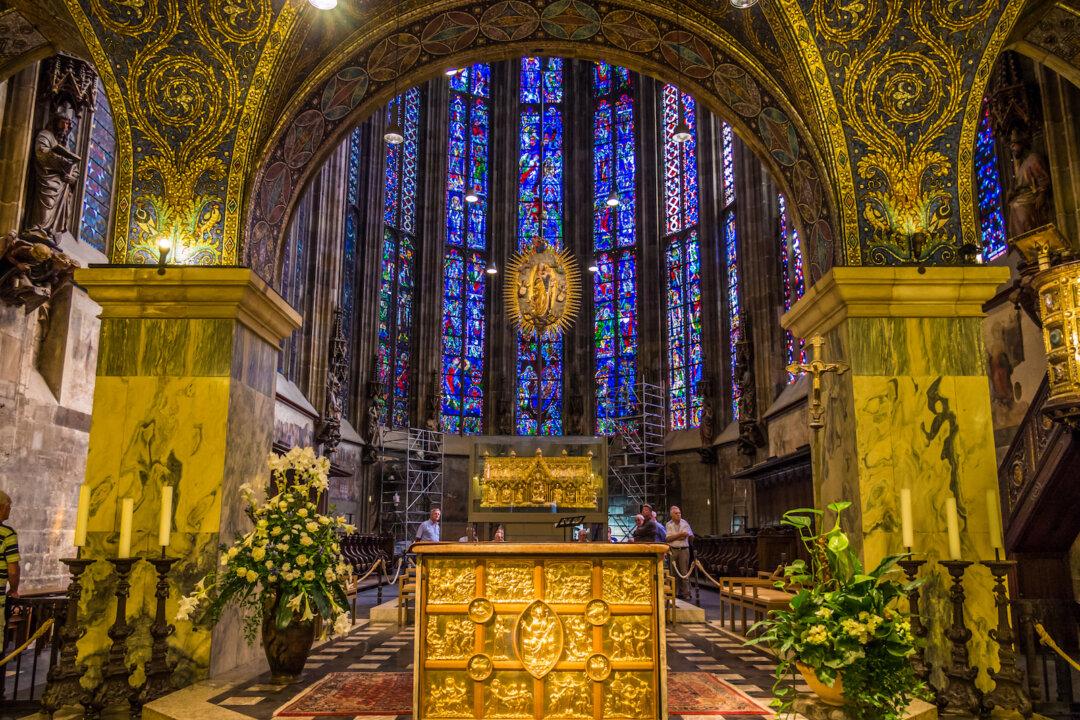From 795 to 843, Aachen, in western Germany, was the capital of the barbarian kingdom of Francia, also known as the Kingdom of the Franks. The Franks were Germanic people who ruled large parts of Western Europe from late antiquity to the early Middle Ages.
In the late eighth century, the king of the Franks and king of the Lombards—Charlemagne—commissioned a palace chapel to be built in Aachen. (Charlemagne, also known as Charles the Great, went on to become the Holy Roman Emperor in 800.)






